Yesterday, the Australian Bureau of Statistics (ABS) released the International Trade in Goods and Services for the month of November. Australia’s trade surplus in November fell to $1,380 million from $1,418 million in October (revised down from $1,595 million). This figure was well below the Bloomberg consensus of $1,650 million.
Export earnings (+0.2% mom) rose marginally, benefiting from a large increase in non-monetary gold. However, this was almost fully offset by a sharp decline in iron ore exports.
Imports (+0.4% mom) rose on the back of increased capital goods imports, in particular civil aircraft.
Consistent with Tuesday’s release of the Reserve Bank of Australia’s (RBA) Commodity Price Index for December, which showed falling commodity prices, the ABS trade data suggests that Australia’s terms-of-trade may have peaked. As shown in the below chart, Australia’s two major commodity exports – iron ore and coal – are now below their peak levels but remain elevated:
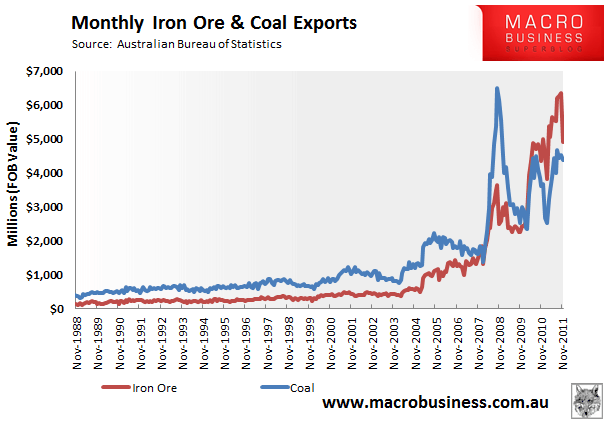
Moreover, both commodities combined still account for a near record share of Australia’s merchandise exports – 41% in November 2011 versus only around 15% in the late 1980s:
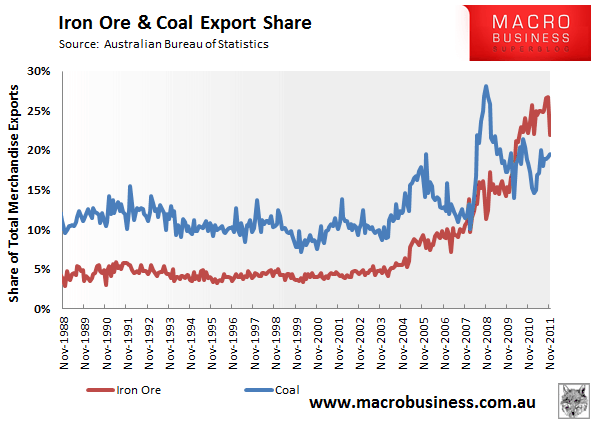
Anyone searching for a reason behind the explosion of Australia’s iron ore exports and terms of trade needs to look no further than China, which now receives around 30% (or $7 billion per month worth) of Australia’s total merchandise exports, up from only 5% in 2000:
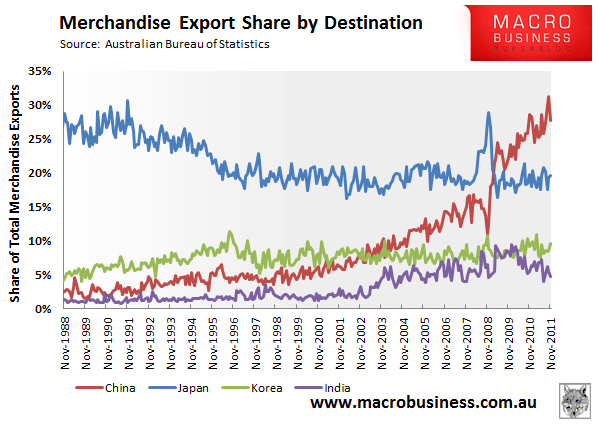
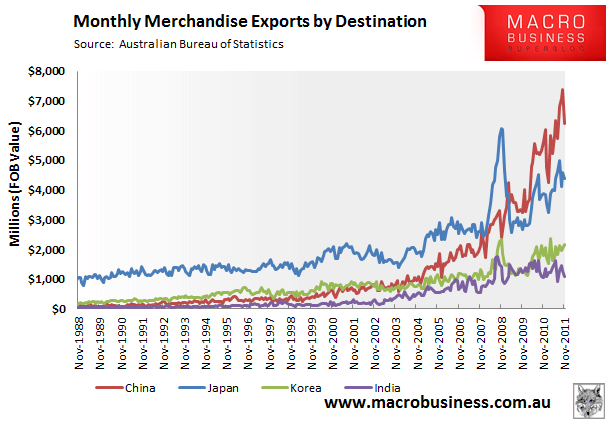
If nothing else, the above charts highlight why Australia’s economy has become so inextricably linked to the Chinese economy and why I see a hard landing in China as the key risk for Australia.
Moving on to the states, and you can see the two-speed economy at work. The key resource states of Western Australia and Queensland are both dominating Australia’s exports and running large trade surpluses. By contrast, the two largest states – New South Wales and Victoria – are running large trade deficits, with Victoria’s export performance also lagging owing to its lack of mineral wealth:
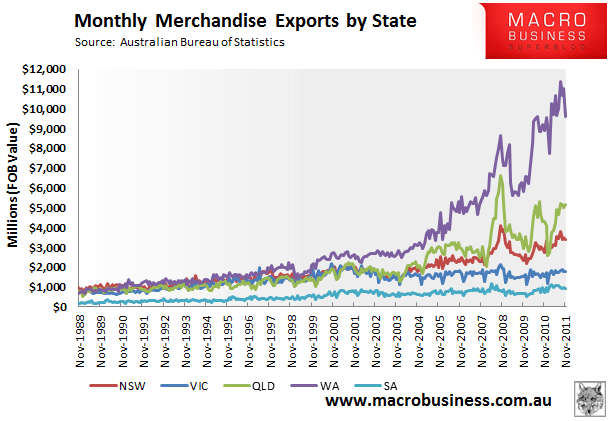
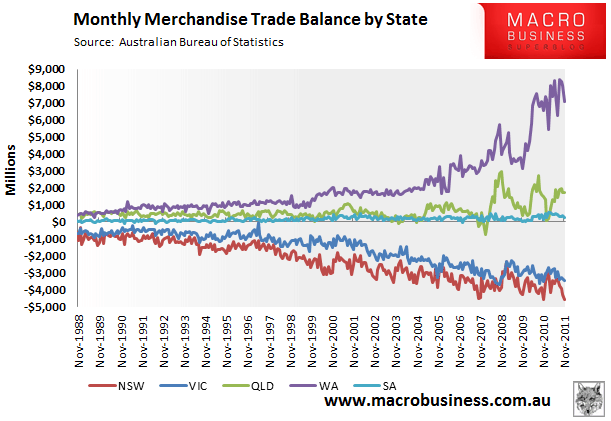
With commodity prices appearing to have peaked, and the mining investment boom likely to see an increase in imports of capital equipment, Australia’s trade balance and terms of trade are set to worsen, reducing national income. However, whether this reduction in national income will be moderate or severe remains to be seen, and depends largely on the health of the Chinese economy.

